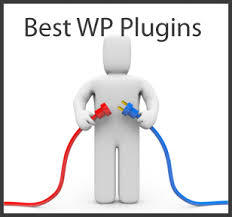Almost a quarter of websites in the world use WordPress for website development so why shouldn’t you? If you are planning on creating a website for a business or your own blog you may immediately gravitate towards WordPress. Before you jump on the WordPress bandwagon you should ensure that you understand what WordPress can do and what it cannot do. Here are a few answers to questions commonly asked about WordPress to help you decide if WordPress is the right choice for your website.
Does using WordPress require technical skills such as coding or programming?
Absolutely anyone can use WordPress without any previous technical skills. WordPress has been designed to be as easy to use as possible. From the installation of WordPress the design and creation of your site, the entire process is simple. If you do need help, there is an extensive amount of help available online – starting with the official WordPress forum. You can find instructions to walk you through any part of installing WordPress and using or managing themes and plugins.
Does WordPress allow users to create unique and original websites?
When you use WordPress there is an unlimited amount of possibilities for the design of your website. There are thousands of different themes to choose from to get you started, just take a look at our selection and make a purchase. Once you have chosen a theme, you can often make changes to the layout, color scheme, and add graphics and custom headers. By adjusting your theme, you can make your site stand out and look completely original. Once your theme and basic site structure is setup, there are loads of additional options in the form of plugins that are easily added to your WordPress website.
Does WordPress include any additional design features?
By using various WordPress plugins you can create just about any website that you have in mind. Not only can you easily create a blog or a business website you can also use WordPress plugins to create and manage a forum or include ecommerce options in your site. There are also plugins designed to help you manage your WordPress site, including analytics and website traffic or helpful features for managing your workflow.
Are there any costs associated with using WordPress?
WordPress itself is free to use, as are many of the themes and plugins; though, there are premium themes and plugins as well. Premium themes and plugins typically offer users more advanced features that required more time for developers to create. While there are lots of helpful and innovative premium themes and plugins, there are still lots of options when it comes to the free themes and plugins. You will also need to find website hosting for your WordPress site. Depending on which hosting company you choose, you can often find incredibly affordable deals. Many of these hosting sites also provide simple one-step installation for WordPress.
Basically, whatever your web design needs are WordPress can handle them. If you ever find yourself at a loss when attempting to find a WordPress plugin to accomplish a task or add a feature to your site there are many WordPress developers out there that would love to create an original plugin for your site. WordPress is easy to use and once you spend some time with it you will see why it has become such a popular platform for creating websites.
Are you tracking visits to your website? If not, it is time for you to start analyzing your online traffic. Using analytics allows you to understand which pages and posts on your WordPress site are receiving the most traffic, how visitors are navigating your website, and which devices people are using to view your website. That is just the tip of the iceberg, when it comes to the available statistics from helpful analytics programs. Other helpful information includes the locations of your visitors, from city to state to country. Instead of relying on a separate website for tracking analytics, installing a WordPress analytics plugin will provide instant statistics directly in your WordPress dashboard. Here are the top five analytics WordPress plugins for tracking website traffic.
Google Analytics
Any list of useful analytics plugins for WordPress would not be complete without mentioning Google Analytics. Google Analytics is the go to solution for tracking website usage and with the help of the Google Analytics WordPress plugin you can view statistics inside your WordPress dashboard. This plugin will automatically add the tracking code needed by Google Analytics in each of your posts and webpages. It is easy to get started with Google Analytics; though, some of the more advanced features may require some time to fully understand.
KISSmetrics
KISSmetrics provides a more in depth look at the actual visitors using your website and what actions they are performing. Other analytic programs focus on overall website usage, while KISSmetrics allows you to follow individual visitors and see what pages they visit and which links they click on. This plugin can be useful for those trying to determine why users are leaving their website early or for those wanting to increase conversion rates. The only downside is that it does not provide as much overall website traffic data as some of the other analytics WordPress plugins.
Mixpanel
Mixpanel is similar to KISSmetrics in the sense that it allows real time tracking of individual visitors. The added benefit of Mixpanel is that you can send emails and push notifications to specific users if you have a subscription based website. Track users and monitor their viewing habits.
Crazy Egg
Crazy Egg provides detailed analytics and website usage statistics. It also provides a visual representation of which pages your visitors go to, using a heat-mapping. This visual makes it easier to understand the overall usage of your WordPress site. Added features include being able to see the number of clicks specific links and elements receive. The disadvantage of Crazy Egg is that it is free for 60 days and then requires a fee.
Jetpack for WordPress.com Stats
The powerful Jetpack plugin for WordPress will allow WordPress users to view the same types of stats available to WordPress.com users. These features are a small part of the Jetpack package and provide some basic statistics. It is not as detailed as Google Analytics; though, it is helpful when you simply want to know the basics. Being part of a larger package, users that want the features provided by Jetpack may not need any additional analytics plugins.

Keeping track of your website usage is an important part of maintaining a website. Without these stats you may not know which posts are more popular and where you are receiving visitors from. No matter which analytics WordPress plugin you choose, every website owner should track website usage in some manner. Start keeping track of your traffic by choosing the right WordPress plugin for you.
Are you still not convinced that WordPress provides the best CMS and website creation solutions? WordPress continues to grow in usage every day and with each new plugin or theme that is created, the power of WordPress expands ever further. A powerful CMS or blogging platform, WordPress is versatile and can handle more than what you may think. If you are still on the fence about whether you should use WordPress for the creation of your website or to replace your existing content management system (CMS) then keep reading.
Ease of Use
The main argument for switching to WordPress is the ease of use. WordPress is very user friendly and designed to allow any newcomer to quickly get their website up and running. Instead of paying someone else to create a website, businesses can design their own site. The simple interface and customization options are relatively easy to understand.
Customization Options
The amount of customization offered with WordPress makes it incredibly versatile. There are thousands of different themes and plugins to choose from. Almost any feature that you could imagine has probably been covered by the many WordPress plugins created by independent developers. Add contact forms, embed media, improve search engine optimization, and provide other helpful features – all through the help of WordPress plugins.

Better Search Engine Optimization
SEO is made easier with the help of WordPress. WordPress allows users to create tags and categories for their posts, which generates more webpages that can be indexed by search engines. WordPress also employs clean coding that makes it easier for search engines to understand your content. With the help of a useful WordPress plugin, you can find even more SEO benefits.
Responsive Website Design
Over the past couple of years more websites have started using responsive website design to make the transition from desktop internet browsers to smart phones and mobile devices. Before the spread of responsive design, website owners would often have to create a second website specifically for mobile devices. Responsive design adjusts the layout of elements on a webpage according to the width of the device being used to view the page. It is now rare to find a WordPress theme that does not use responsive design. With WordPress and responsive theme you will not have to worry about how your site appears on mobile devices.
Loads of Free Resources
WordPress itself is free to use, as well as many of the most popular themes and plugins. If you choose, there are premium themes and plugins with additional support and features; though, you can generally find great alternatives for free.
Transfer from other CMS Platforms to WordPress
In addition to offering lots of free features and being easy to use, it is also a simple process to transfer your website from another platform to WordPress. WordPress includes the ability to transfer websites from Google Blogger, Joomla, Drupal, and many other popular platforms. Without much work, you can migrate your existing website to WordPress.
The freedom allowed with WordPress makes it perfect for anyone looking for a new blogging platform, CMS, or website creation software. Download the WordPress software and get started today.
Millions of users have discovered the wonderful advantages of using WordPress to build their websites. In the past, users would need to purchase expensive website creation software or hire website designers to have a professional looking website built. With WordPress, the power is back in the hands of the average internet user, requiring no website design expertise. For the most part, the growth of WordPress could be attributed to the thousands of available plugins. Using plugins, WordPress users can build a website exactly as they imagine it; though, these plugins can also lead to a whole host of complications when they are not installed and managed correctly. To keep your WordPress site running smoothly, read over these tips for correctly installing and using WordPress plugins.

Deactivating a WordPress Plugin
Plugins eat up resources and can slow down your WordPress site. If you have plugins that are not currently in use you should consider deactivating them. It is easy to determine if a plugin is currently providing a benefit to your website. Go through your list of plugins and think about its function. Deactivate the plugins that are currently not in use.
Once you deactivate a plugin, you should ensure that it is regularly updated. Just because a plugin is not in use does not mean that it won’t pose a security risk if there is a vulnerability that can be exploited. Keep your deactivated plugins updated. If you keep a WordPress plugin deactivated for an extended period of time then it is safe to say that it no longer serves any helpful purpose. Uninstall deactivated plugins that have remained deactivated for more than one month.
Keep your Plugins Updated
This next piece of advice is very important. Always keep your WordPress plugins updated. As mentioned above, you should even update your deactivated plugins. Plugins that are not kept up to date can lead to security risks. If the developers of a particular WordPress plugin do not keep their plugin updated, then you should consider removing it. Plugins that are not regularly updated by developers may become unsafe and you should start searching for a replacement.

Limit Your Use of Plugins
Managing a WordPress site does not need to be complicated. Try to limit your use of plugins by only installing plugins that are essential to the user experience you are providing your visitors. That is the general rule; though, there are some backend plugins that are helpful for keeping track of your website, such as analytics, SEO plugins, and other backend plugins. Limiting the number of plugins you install can also help with compatibility. The more plugins you have the more likely you are to run into some type of compatibility issue between the plugins. Having lots of plugins can also make it more difficult to ensure everything is updated regularly and still used by your website.
Follow this advice to keep your WordPress site secure and running smoothly. Start by deactivating unused plugins, uninstalling plugins that will never be used again, and keeping all of your plugins updated. Finally, limit how many plugins you install. If you stick to these tips, you can increase your chances of having a great WordPress site that provides the right user experience to visitors.
Whether you are selling physical items or digital goods, adding a shopping cart to your WordPress site is a simple task. It can already be hard enough trying to run a business online, without having to worry about how you will sell your goods through your website. Using a WordPress plugin, you can quickly add shopping cart capabilities to your website. Several of these plugins include inventory management and other features to make running your business easier. Check out the five best WordPress plugins for adding a shopping cart to your site.
WP eCommerce
WP eCommerce provides shopping cart implementation, payment methods, and a large variety of options and additional support. At its base level, WP eCommerce is a free plugin; though, the developers also offer a premium upgrade. In addition to its standard features, users can pay specifically for various add-ons. With the free version, users are somewhat limited. For example, the only payment option available with the free version is PayPal. Overall, WP eCommerce is a dependable ecommerce WordPress plugin that is managed by a large group of developers. If customization is your main concern then give WP ecommerce a try.
WooCommerce
Over the past couple of years, WooCommerce has become the most downloaded and installed ecommerce plugin for WordPress. Its biggest selling point is ease of use. A new user could have their shopping cart up and running in an hour or two. This is a free WordPress plugin; though, like most of the available ecommerce plugins, there is a premium version. Even with the free version, users will get to enjoy inventory management, the ability to accept various payment methods, create coupon campaigns, and view statistics with the included reports. This is the most popular ecommerce plugin for a reason and is a great choice for any online business.
MarketPress
MarketPress is a premium WordPress plugin, with no free version; however, MarketPress currently costs $19, an affordable price for the amount of features provided. Use MarketPress to sell real items or digital downloads. This plugin can also be used with WordPress multisite for creating a series of storefronts. MarketPress offers full support and has an excellent track record when it comes to compatibility. MarketPress fits right in the middle of available shopping cart plugins for WordPress. For a small fee, users will have a secure plugin for creating a shopping cart and selling goods through their website.

Shopp WordPress Plugin
Shopp is another free option with optional paid support. The main limiting factor with Shopp is that there are not a lot of options for accepting payments. Despite the lack of payment providers, Shopp offers lots of customization and configuration options. For those wanting a free plugin that they can customize to meet their needs, Shopp is a suitable choice.

Cart66
Cart66 is the most expensive WordPress plugin on this list, costing $149. Luckily, you get what you pay for. There are many payment and shipping gateways. Also, this plugin offers the most complete coupon system for creating your own coupon campaign. The professional support will ensure you never run into issues with this plugin. If you take your business seriously and want a trusted plugin for offering secure shopping then Cart66 may be worth the price.
Always research any plugin that you plan to install in WordPress. You want to make sure they are updated regularly and are supported by the most recent version of WordPress. When getting a shopping cart plugin for WordPress, find out that fits your needs.
When working with a WordPress site, one item that always comes up is plugins. Plugins can play a vital role in the success of your WordPress site. They can add to the user experience, help secure your site, and make managing your website much easier. There are thousands of different plugins to choose from, not that you have to install plugins in order to have a great WordPress site. Installing plugins can also change how quickly your website loads, which is why it is important to carefully consider each plugin that you want to install. Listed below, you will find five essential WordPress plugins that every site owner should consider installing.
W3 Total Cache
The first plugin in the list is W3 Total Cache. This plugin is the most downloaded caching plugin for WordPress sites. For those that are not aware of the purpose of having a caching site, an explanation is in order. When a user visits your WordPress site, WordPress generates the page that they see on the spot, running a variety of scripts to pull information from the WordPress database. This is the cause of slow loading WordPress site. A caching plugin will create static webpages, essentially running each of those scripts ahead of time and then instantly presenting users with a pre-generated webpage. W3 Total Cache will handle this responsibility with ease. Give your users a quicker loading WordPress site with W3 Total Cache.
WordPress SEO by Yoast
If there is one plugin to consider installing on your WordPress site it should be WordPress SEO by Yoast. This plugin will handle the creation of XML sitemaps and provide a host of other search engine optimization benefits. While writing your posts, use the snippet preview section to write Meta titles and descriptions. Set a target keyword and determine how often it is used in your content and Meta data. One of the most popular plugins, WordPress SEO by Yoast is an indispensable tool.
After the Deadline
Dealing with grammar and spelling mistakes while creating posts in WordPress can be difficult using the built in editor. After the Deadline is a plugin that includes grammar and spelling checking, as well as advanced style checking. Simple errors can detract from your posts and force your visitors to pause while reading – which can lead to visitor drop offs. Keep your posts clear and easy to read with After the Deadline.
Google Analytics
Every website administrator should use some form of analytics to track website traffic, including stats such as bounce rate, pages visited, and visit durations. Understanding how visitors use your website can help in the overall direction of your WordPress site. Using the Google Analytics plugin, you can get those stats directly from your WordPress dashboard without having to visit another website.
Digg Digg
In this day and age, social media is needed to spread the word about your WordPress site and posts. The Digg Digg WordPress plugin adds social media sharing buttons to your site, so visitors will have no problems quickly sharing your posts on Facebook, Twitter, Google Plus, and other social media platforms. Digg Digg also includes customization options for the placement of a floating social media sharing bar.
With thousands of WordPress plugins to choose from for your website, it helps to stick with the plugins that provide the most benefits. These essential WordPress plugins add various advantages, such as SEO, increases to page loading speed, and social media sharing. Create a top notch WordPress site using the best plugins available.
Do you want to protect your WordPress site from malicious attacks? Security is a major concern for most website administrators and using WordPress can increase the risks and susceptibility to attacks of your website. The more popular a medium, the more hackers will work to discover its vulnerabilities, and WordPress is used by millions of people around the world. While there are some basic precautions that users should take to help make their WordPress website more secure, these plugins will bring additional layers of security to your site. In addition to creating a strong password, replacing the default admin username with a new username, and keeping WordPress up to date you should consider adding some of these plugins to your site.
iThemes Security
iThemes Security, which used to go by the name Better WP Security, is one of the most thorough security plugins for WordPress. Perfect for beginners and full of options for experienced users, iThemes Security has over 30 different features for protecting your WordPress site from hackers. Some of these features include changing the URLs of WordPress dashboard pages. Hackers can easily figure out the URL to your login and admin screen. Changing these URLs bring some additional security. iThemes Security can also scan your WordPress files for viruses, enforce strong passwords, and detect attempts to hack your site.
Acunetix WP Security
Acunetix WP Security also provides the ability to obscure areas of your WordPress site, hiding the location of your administrator dashboard. It also searches for vulnerabilities and recommends corrective actions concerning passwords, file permissions, and your WordPress database. Acunetix WP Security is a lightweight plugin designed for novices, and does not include a lot of customization options; though, the simple interface makes it great for those looking for some basic protection.
WP Login Security 2
Preventing people from being able to login to your WordPress dashboard will eliminate the majority of the threats against your site. WP Login Security 2 adds login protection by allowing you to whitelist IP addresses. Only users accessing the login screen from the approved IP addresses will be allowed to login. When an IP address is not recognized an email will be sent to the user containing a link with a one-time only key. For those that have a minimal amount of users with access to their WordPress site, WP Login Security 2 is a simple plugin for stopping hackers from attempting to sign into your WordPress dashboard.
Wordfence Security
Wordfence Security not only adds over 50 security features to your WordPress site, it also includes features for speeding up the loading of your pages. Using the Falcon Engine, Wordfence Security can be used for caching. Wordfence Security also brings real-time protection, blocking known attackers and scanning your files for viruses. You can also use this plugin to view your website traffic, as users navigate your website, including visits from search engine robots and humans.

These are just a small sampling of the available security plugins for WordPress. Some other notable mentions include BulletProof Security and 6Scan Security. BulletProof Security provides features similar to iThemes Security, while 6Scan Security is a basic plugin for scanning your files for viruses.
Website security is something that everyone needs to plan for. WordPress is a popular platform and therefore WordPress sites are a common target for hackers. Protect your site by installing at least some level of added protection.
Do you find popup advertisements on websites to be distracting? While some internet users consider popups to be annoying, research has shown that they are highly effective at lowering bounce rates and helping websites gain subscribers or followers. You can use popups to provide visitors with additional offers, newsletter subscriptions, and vital information. The following plugins will allow you to easily set up your own popup, to be used on your WordPress site. Along with installing any of these great plugins, be sure to consider the purpose of your popup, to avoid annoying your visitors.

Deciding on the Reason for Having a Popup
Before you install a WordPress popup plugin, you need to think about the reason for having a popup. Do you want to gain more subscribers? Or maybe you wish to offer your visitors a special deal on one of your products. After considering the purpose of having a popup on your WordPress site, decide whether you want to place the popup on your homepage, on posts, or specific pages. Several of these plugins will allow you to specify where and when they should be used. Create a plan for using a popup and a timeframe for its use.
Choosing a WordPress Popup Plugin
With your popup plan in place, it is time to start choosing the right WordPress popup plugin. There are many different plugins to choose from, including both free and premium plugins. Make sure you read what options are available with each plugin, to find the right popup for your WordPress site.
Cliftons Lightbox
If you only plan on using your popup to display a message to your visitors, then consider installing the Cliftons Lightbox plugin. This includes a basic popup message with limited options, making it a great choice for those that do not want to mess around with a lot of features or settings. Users can include a title, description, bullet point list, and in image in their popup. Another option includes adding a YouTube video in the popup instead of an image. This is a free lightweight plugin solely for displaying a popup message.
Dreamgrow Scroll Triggered Box
The Dreamgrow Scroll Triggered Box plugin is a free WordPress plugin for asking visitors to sign up for a newsletter. This plugin includes a simple form asking for users to input an email address to sign up for a newsletter or other offer. Customization options include adding descriptions, bullet point lists, and images. You can also include social media sharing buttons in the popup. Instead of relying on the length of time a visitor spends on a page before appearing, this popup will show up as a user scrolls down your page. It can be placed on specific posts or even your homepage. For a free popup plugin with a form for accepting email addresses, Dreamgrow Scroll Triggered Box may be the best option.
These are just a couple of your options for finding a great WordPress plugin capable of creating popups. Other notable free options include the YITH Newsletter Popup and the Popup Extension for Newsletter plugins.
Having a popup for displaying more information to your visitors or for collecting subscriptions for a newsletter can be more effective than placing subscription options in a sidebar or bottom of a post. Install a WordPress popup plugin today and start gathering more followers or subscribers.
Are you an aspiring web developer looking to create plugins and themes for WordPress? Then you should buy our premium package so you can see how our professional themes are designed. Not everyone uses the exact same structure when writing code, no matter what coding language you are using. This can lead to problems, when developing code that will be used by a large amount of people. In order to increase compatibility with other plugins, themes, and WordPress itself, follow the WordPress coding standards. These standards can be found at wordpress.org and help create a uniform coding structure that everyone should go along with. If you want your plugin or theme to reach tons of users, learn how to follow the WordPress coding standards.
Visit the Official WordPress Site
To start understanding the coding standards preferred by WordPress, visit the official WordPress site at codex.wordpress.org. There you will find detailed information explaining proper syntax for writing in PHP, CSS, HTML, and JavaScript. By using a consistent style, your code will be easier for others to read and understand. This will include the proper syntax for writing your code, use of spaces, and the proper method for including comments in each coding language.
Avoid Name Collisions from Duplicate Function Names
WordPress is created by a large group of developers. The same is true of plugins and themes. If you have a theme created by someone else, as well as several plugins, there are going to be a large amount of functions created by various developers. To avoid naming a function a name that already exists, create your own prefix. Name collisions can create fatal errors that may make your WordPress website impossible to view or lead to other errors. Creating a prefix is a simple solution. For example, if you are developing a plugin called “WordPress Example Plugin”, you may create a prefix wep_ and use it for every function that you create.
Include Detailed Comments
Leaving comments will not only help yourself remember small details about your plugin or theme months after you have written the code, it will also help other developers that want to edit your plugin for their own use. Use comments in your main PHP file to explain the purpose of your plugin and detail special functions and other unique coding.
Test your Plugin or Theme Thoroughly
Even if you follow the WordPress coding standards, you should always thoroughly test your plugin or theme. Start by running plugins in debug mode to weed out any potential errors. Errors can be used by hackers for malicious attacks. Security is a major part of development for WordPress plugins and themes that are going to be used by other WordPress users. Also, before you get too far into the coding process, find out if any of the functions you need to use are already a part of the core functions included in a basic WordPress installation. Using functions that already exist will help keep your plugin smaller and can help prevent security issues.

Whether you are writing your first WordPress plugin or plan on editing an existing WordPress plugin, always follow the coding standards preferred by WordPress. Limit security risks and compatibility issues by looking over the correct syntax usage for PHP, CSS, HTML, and JavaScript. Once you get started, it is not difficult to keep your coding clean and easy to read. Before you write too much code, make sure you read the official coding standards for WordPress and be sure to purchase one of our premium themes as a good starting point.
Are you aware that you can add security to your WordPress site without installing any additional plugins? By editing your htaccess file, you can help stop malicious attacks against your WordPress site. This simple file, which can easily be edited, allows users to block IP addresses, restrict access to specific folders and files, and provide other security benefits. Installing WordPress plugins can slow down the loading of your site, making the editing of your htaccess file a great alternative. Learn how to edit your htaccess file for improved WordPress security.
Understanding the .htaccess file
Many users may have never heard of the htaccess file or what it is used for. This file is located in the root folder of your WordPress installation and depending on your web hosting provider it may be hidden from view. The htaccess file is used by a web server as a configuration file for providing various settings. As mentioned above, you can use this file to restrict IP addresses, remove access to files and directories, and more. Before editing your htaccess file, it is wise to make a copy of it, in case you need to revert back to your original htaccess file.

Blocking IP Addresses
If you have a frequent spammer or know the IP address of potentially harmful attacks, you can use your htaccess file to block specific IP addresses. Once entered, the IP addresses that you add will immediately be blocked by your web server. As soon as a user from one of these IP addresses visits your website, they will be denied access. Here is an example of this in use:
order allow, deny
deny from ENTER.IP.ADDRESS
allow from all
A similar method can be used to create an IP address whitelist, denying access to all IP addresses, except the ones included in the htaccess file. Use the following example to start creating your own whitelist, placing each IP address in its own line.
order deny, allow
deny from all
allow from ENTER.IP.ADDRESS
By default, WordPress does not block directory browsing. This means that visitors could essentially browse through all the files and folders in your WordPress directory. They would have access to view all of your media files and files located in your plugin and theme folders. This is a large security risk that is easily solved. Simply include the following line in your htaccess file:
Options All –Indexes
That will disable directory browsing and make your WordPress site more secure. These are just a few examples of how your htaccess file can be used to help protect your WordPress site. Further code can be used to only allow specific file types to be viewed, restrict access to certain folders, or disable access of single files. To deny access to a single file, use this code, replacing the filename in the example with the file you wish to block:
order allow, deny
deny from all
As you can see from these examples, the code you need to input is short and easy to include. For additional security find other examples of how the htaccess file can be used to protect your WordPress site. Keeping your WordPress site secure is easier than you may think, so start protecting your site today. With advanced support like this, why wouldn’t you purchase one of our premium themes?


